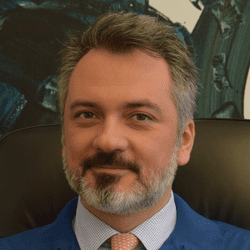
COVID-19 is not a bioweapon and it is dangerous to claim that it is!

Author: Ljupčo Jivan Gjorgjinski
Disease grips humanity’s imagination with a chokehold. It distances people from each other and can create animosities between groups. The fear of disease trumps even war, since you can see guns and tanks. You cannot see the bubonic plague, or Ebola, or COVID-19 with your bare eyes.
History books remember the use of disease in war with disdain and scorn.
This is partly why it was possible for the Biological and Toxin Weapons Convention (BTWC) to enter into force 45 years ago on 26 March 1975, and become the first legal instrument to ban an entire category of weapons of mass destruction (WMDs).
<p”>The use of biological pathogens has been illegal since the signing of the Geneva Protocol of 1925 and effectively banned with the BTWC for almost five decades because the most powerful countries, and all others with them, could agree that biological warfare is unconscionable, even for war. The BTWC remains the keystone (still in need of a capstone) of the global biosecurity framework.
Allegations that the Coronavirus is a biological weapon designed or released for hostile purposes is dangerous. Yet, this instance of fake news has certainly proven quite virulent, already infecting the minds of many around the world. Most of us have been exposed to some news clip attaching hostile human intent behind the Coronavirus and even high-ranking political figures have claimed as much; many believe such claims.
To be clear, to use a bioweapon is to use a WMD; this would be a grave breach of international peace and security. Scientists from around the world, through advancing microbial forensics, have already firmly ruled out any purposeful manipulation of the Coronavirus by humans. Claiming the opposite detracts from the much-needed focus to battle the disease.
Perhaps more harmfully, such toxic rumours weaken the well-established stigma around biological warfare, enforce ‘us’ vs ‘them’ stereotypes, and reduce trust in the international system and thresholds for conflict in general.
Biological weapons were the first category of WMDs to be banned, not only because they were considered morally repugnant, but also because they were not then considered an effective method of warfare. They could not be controlled with precision for specific military objectives. For both these reasons, the use of pathogens in warfare carries a very strong stigma. Speaking of biological weapons as just another instrument of statecraft can weaken that stigma and encourage renewed research in this highly dangerous area.
False information also strengthens stereotypes against real and potential adversaries, which can fuel long-term divisions, and even conflict. Estimates vary that 25–70% of the population of an infected country will be diagnosed with COVID-19 at some point. This means that most people in the world will either contract it or know someone close who has it, including many who will die from it. The rumour that the Coronavirus is a bioweapon may feed their anger and their need for someone to blame — a person, an ethnicity, a state, a civilization — and may influence possible future hostilities.
The international system has hardly been more stressed in the seven decades since the end of WWII; more, perhaps, than even during the bipolar calculations of the Cold War. Trust is rather scarce. Allegations that some group is responsible for the disease, which may float long after proven wrong, can spark feelings of animosity among citizens and decision makers alike. This can easily rupture the international system as we know it and reduce existing thresholds to conflict.
Thanks to the architects of the peace and security framework after WWII, there is a body tasked to deal authoritatively with matters of peace and security: the United Nations Security Council. Those same countries, which understood five decades ago that they could not use bioweapons effectively against each other, led the effort to ban them outright; they are permanent members of the UN Security Council.
This is the moment when a Security Council resolution can reconfirm the collective sentiment that biological weapons are morally revolting and should not be used or pursued under any circumstance. Such a resolution may and should contain a paragraph on the danger of false information on the use of bioweapons. It may also include some issues that have been discussed at the BTWC meetings of state parties and enjoy almost universal acceptance. Such a process can anticipate the dangerous complementary developments of other emerging technologies with staggering dual-use potential for biological warfare, such as in biotechnology, 3D printing, and artificial intelligence. A Security Council resolution can weigh as the needed capstone to hold the global biosecurity framework in place. The moment is opportune, but fleeting.
If the false information pandemic feeding the story that the Coronavirus is a biological weapon secures and strengthens its chokehold, co-operation on much less ambitious multilateral initiatives may become impossible. It may also fuel existing dynamics among populations and their political decision makers for conflict.
This is why, in the area of biosecurity more than any other, the truth is in everyone’s existential interest.
This post was first published on Medium, and is republished here with permission.


